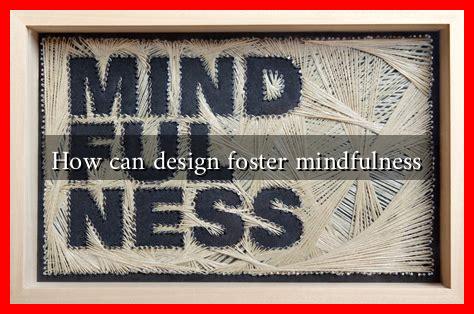-
Table of Contents
- How Can Design Foster Mindfulness?
- The Intersection of Design and Mindfulness
- Key Principles of Mindful Design
- Case Studies: Mindful Design in Action
- 1. The Mindfulness Room at Google
- 2. The High Line in New York City
- Designing Mindful Products
- Statistics Supporting Mindful Design
- Conclusion: The Future of Mindful Design
How Can Design Foster Mindfulness?
In an increasingly fast-paced world, the concept of mindfulness has gained significant traction. Mindfulness, the practice of being present and fully engaged in the moment, can be enhanced through thoughtful design. This article explores how design can foster mindfulness in various environments, from personal spaces to public areas, and highlights practical examples and strategies.
The Intersection of Design and Mindfulness
Design is not merely about aesthetics; it profoundly influences our experiences and interactions. Mindful design considers how spaces, products, and interfaces can promote awareness, tranquility, and focus. By integrating principles of mindfulness into design, we can create environments that encourage users to slow down, reflect, and engage meaningfully.
Key Principles of Mindful Design
To effectively foster mindfulness through design, several key principles should be considered:
- Simplicity: A clutter-free environment reduces distractions and promotes clarity. Minimalist design can help individuals focus on what truly matters.
- Natural Elements: Incorporating nature into design—through biophilic design principles—can enhance well-being. Studies show that exposure to natural elements can reduce stress and improve mood.
- Comfort: Ergonomic design that prioritizes user comfort can enhance focus and reduce physical strain, allowing individuals to engage more fully in their tasks.
- Intentionality: Every design choice should have a purpose. Intentional design encourages users to interact with their environment mindfully, fostering a deeper connection.
Case Studies: Mindful Design in Action
Several organizations and designers have successfully implemented mindful design principles, creating spaces that promote mindfulness:
1. The Mindfulness Room at Google
Google has incorporated mindfulness rooms in its offices, designed to provide employees with a quiet space for reflection and relaxation. These rooms feature calming colors, soft lighting, and comfortable seating, allowing employees to take a break from their busy workday and practice mindfulness.
2. The High Line in New York City
The High Line, an elevated park built on a former railway line, exemplifies how urban design can foster mindfulness. The park integrates natural landscapes, art installations, and seating areas that encourage visitors to slow down and appreciate their surroundings. According to a study by the Project for Public Spaces, the High Line has become a model for urban revitalization, promoting community engagement and well-being.
Designing Mindful Products
Mindfulness can also be integrated into product design. Here are some examples:
- Mindful Tech: Apps like Headspace and Calm are designed with user experience in mind, featuring soothing colors and intuitive interfaces that encourage users to engage in mindfulness practices.
- Wearable Devices: Products like the Muse headband provide real-time feedback on brain activity during meditation, helping users cultivate a deeper awareness of their mental state.
Statistics Supporting Mindful Design
Research supports the benefits of mindful design:
- A study published in the Journal of Environmental Psychology found that environments designed with natural elements can reduce stress levels by up to 60%.
- According to a report by the Gartner Group, organizations that prioritize employee well-being through mindful design see a 20% increase in productivity.
Conclusion: The Future of Mindful Design
As we navigate a world filled with distractions, the role of design in fostering mindfulness becomes increasingly vital. By embracing principles of simplicity, natural elements, comfort, and intentionality, designers can create spaces and products that encourage individuals to engage mindfully with their surroundings. The examples of Google’s mindfulness rooms and the High Line park illustrate the profound impact mindful design can have on well-being and community engagement. As we move forward, integrating mindfulness into design will not only enhance individual experiences but also contribute to a more thoughtful and connected society.

